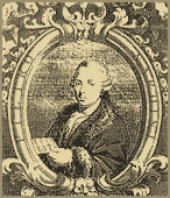He got his first musical training in Livorno, and soon he demonstrated a great talent: in 1734, when he was twelve years old, he was accepted as student by Tartini in Padova. In a short time he began to perform in public concerts and to teach, and he frequently moved between Tuscany and Padova. In Livorno he probably taught Giuseppe Cambini, but we know very little of his biography in this period. In 1760 he went to Vienna and participated - as a musician - to the celebrations in honor of the crown prince, and in the same journey he visited Dresden. Between October 1762 and March 1765 he worked as violinist and orchestra director at the Ducal Court of Stuttgart under the guide of Jommelli. In 1763, in Stuttgart, Nardini was appreciated by Leopold Mozart, who later said: «the beauty, purity, and smoothness of his sound and of his "cantabile" can not be equalled». In 1765 he went to Brunswick and then back to Livorno in May 1766. It was in this period that he began to collaborate with Filippo Manfredi (violin), Giovanni Giuseppe Cambini (viola) and Luigi Boccherini (violoncello) in the first bows quartet that ever existed: the "Quartetto Toscano" [Tuscan Quartet]. In 1770 he worked as first violin and after as music director in the chapel of the Court of the Grand Duchy Leopoldo of Tuscany in Florence - among other very good elements as Carlo Antonio Campioni. The presence of Nardini contributed to the development of the artistic and cultural life of the city. He began to participate to the cultural activities of the Arcadia under the name of Terpandro Lacedemone. Then he worked always in Florence, except for - as Burney said - a visit to Tartini on his deathbed. In September 1770 Charles Burney was in Italy to collect material for his book "The present state of music in France and Italy", and listened to a concert by Nardini. His comment sound very similar to what L. Mozart had said time before: «His sound is sweet and regular, not very strong but clear and exact, very communicative in the slow movements and for this similar to his big master Tartini. His performance aimed at satisfying and pleasing more than surprising: I think he is the most perfect violinist that exists in Italy». And we can mention other similar opinions: Adalbert Gyrowetz, who exalted in Nardini the «purity and accuracy of the sound», and Christian Friedrich Schobert, who said: «the sweetness of his manner of playing is beyond description» and icy aristocratic people have been seen melting into tears while he played an Adagio of his». The music production of Nardini shows his manner of playing and characterizes itself for the lyric pages more than for the virtuous ones. In that production a writing influenced by Tartini’s style is clear: the sonatas for two violins present a talking interlacement among the high parts and follow a division in three bipartite times - lento, rapid, rapid - that maintain the same tonality. Also the sixth concerts for violin and orchestra follow of Tartini’s scheme of an introducing lento, a first time which is rapid, and a final in the form of Rondo. The six bow quartets differ from Tartini’s style because of their structure, thematic invention and above all for the emancipation of the bass part. While his overtures are influenced by Jommelli’s production, the sonatas for harpsichord are influenced by the style of Alberti and Pasquali. The concerts for flute, that show a profound knowledge of this instrument, are less known but not of inferior quality for expressive intensity in comparison with the operas for violin.
Instrumental music
Ouverture in Re Magg. "Genova"
Ouverture in Re Magg. (Basel 536)
Ouverture in Re Magg. (Basel 537)
Concerto per flauto in Re Magg. n. 1
Concerto per flauto in Sol Magg. n. 2
Chamber music
6 Triosonate "Noseda" for two flute and bass
5 Sonate per flauto, violino e B. C.










